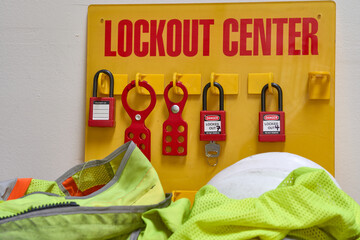Lockout/Tagout (LOTO) procedures are critical measures to ensure worker safety during the maintenance and servicing of equipment. These procedures involve isolating energy sources and applying locks and tags to prevent accidental startup. The requirements for these procedures are established by specific government entities. In this article, we will explore which government entity sets these requirements and delve into the details of LOTO.

In the United States, the Occupational Safety and Health Administration (OSHA) is the primary government entity responsible for establishing the requirements for Lockout/Tagout procedures. OSHA, an agency under the U.S. Department of Labor, was created in 1970 with the primary mission of ensuring safe and healthy working conditions. Under the Occupational Safety and Health Act (OSHA Act), OSHA has the authority to develop and enforce workplace safety and health standards.
Specifically, OSHA’s standard 29 CFR 1910.147 — The Control of Hazardous Energy (Lockout/Tagout) outlines the requirements for LOTO. This standard applies to the servicing and maintenance of machines and equipment in which the unexpected energization or release of stored energy could cause injury to employees. OSHA’s standard aims to protect workers from hazardous energy during service and maintenance activities. Loto Steps OSHA
Under the 29 CFR 1910.147 standard, employers must establish and implement an energy control program to ensure that machines and equipment are isolated from energy sources and rendered inoperative before any servicing or maintenance work is performed. Key requirements include:
While OSHA is the primary agency responsible for LOTO requirements in the United States, other countries have similar government entities that establish related regulations. For example:
In Canada, the Canadian Centre for Occupational Health and Safety (CCOHS) is responsible for developing standards for workplace safety and health. Similar to OSHA, CCOHS has regulations regarding LOTO procedures to ensure the safety of workers during the maintenance and servicing of equipment.
In Europe, various countries have their own occupational safety and health agencies that establish LOTO requirements. For example, the Health and Safety Executive (HSE) in the United Kingdom is responsible for developing and enforcing workplace safety regulations.
The importance of Lockout/Tagout procedures cannot be overstated. Statistics show that many workers suffer severe injuries or even fatalities due to the lack of proper LOTO measures. Proper implementation of LOTO procedures can effectively prevent these tragedies.
One of the primary goals of LOTO procedures is to prevent the accidental startup of equipment during maintenance or servicing. This not only protects the workers directly involved in the maintenance but also safeguards others who may be in the vicinity of the equipment.
In some cases, even if the equipment does not start up, stored energy (such as pressure, heat, chemical energy, etc.) can pose a threat to workers. LOTO procedures require that all energy sources be isolated or released before any maintenance or servicing work is carried out, ensuring a safe working environment.

Implementing effective LOTO procedures requires a comprehensive approach, including developing detailed procedures, training employees, using appropriate devices, and regularly inspecting and updating the procedures.
Employers need to develop detailed energy control procedures in accordance with OSHA standards. These procedures should include step-by-step instructions, a list of required tools and equipment, methods for isolating and de-energizing energy sources, and more.
All employees involved in LOTO procedures must receive thorough training to ensure they understand and can correctly perform the procedures. Training should cover the basic principles of energy control, proper use of equipment and tools, and emergency response protocols.
LOTO procedures require the use of approved lockout and tagout devices. These devices must meet relevant safety standards and effectively prevent the accidental startup of equipment.
Energy control procedures need to be regularly inspected and updated to ensure their effectiveness and compliance. Employers should designate personnel responsible for conducting inspections and making necessary adjustments and improvements.
Lockout/tagout procedures (LOTO) are an important measure to ensure worker safety during equipment maintenance and repair. In the United States, the Occupational Safety and Health Administration (OSHA) is the primary government agency responsible for developing and enforcing LOTO requirements. By developing detailed procedures, training employees, using proper equipment, and regularly inspecting and updating procedures, employers can effectively prevent accidental startups and energy releases, thereby safeguarding the safety and health of workers. The purpose of this paper is to increase understanding and awareness of the importance of LOTO procedures and to encourage their careful implementation in the workplace.
Want To Learn More? Click Here To View Product Details!